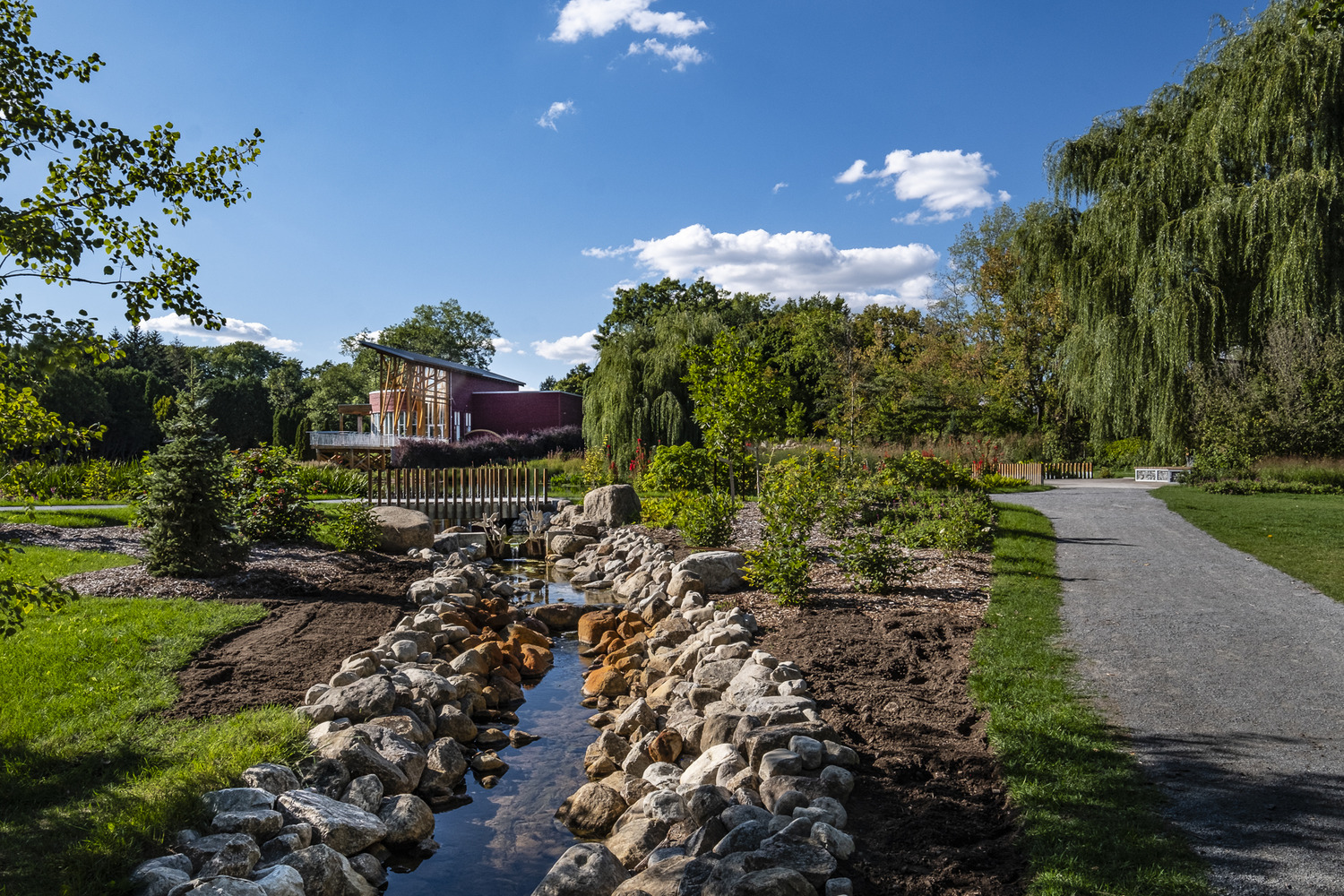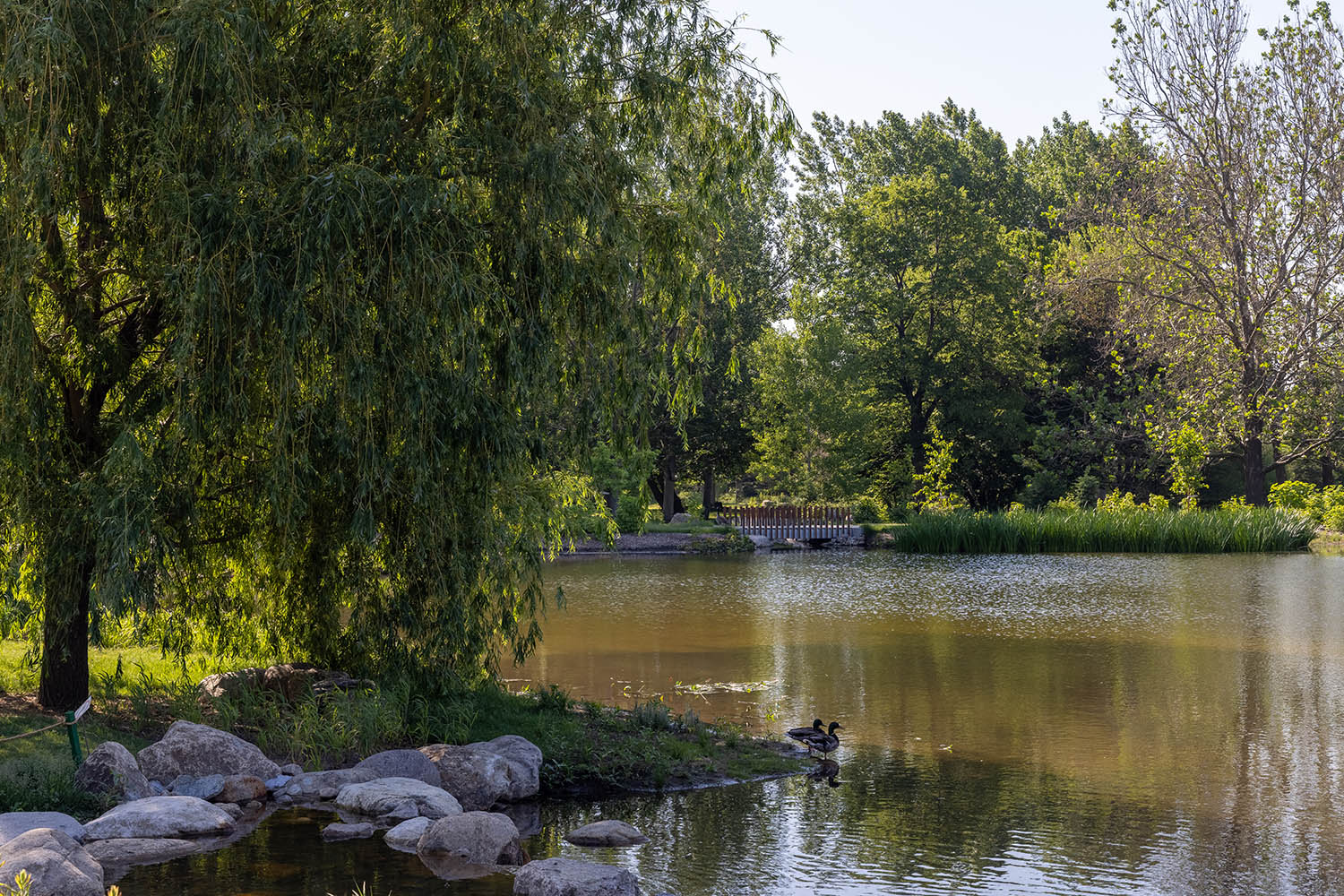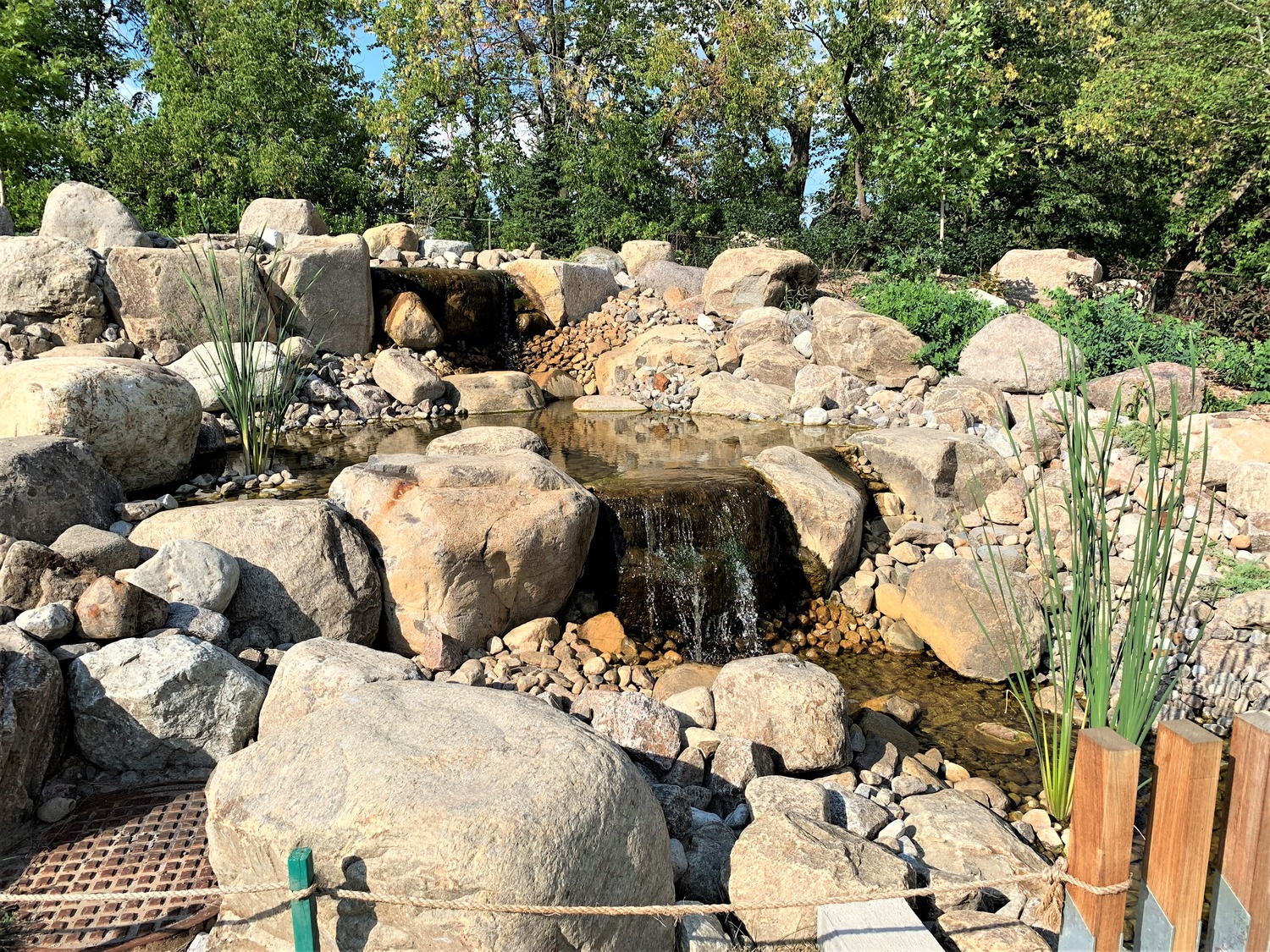
Plant-Tech
Montreal Botanical Garden protects biodiversity with phytotechnology
BY KARINA SINCLAIR
Beauty and brawn. Can plants have both? When used to solve heavy-duty environmental problems, like controlling invasive species, decontaminating soil or preventing erosion, plants truly are ecological powerhouses. This application of plants is called phytotechnology, and it’s being used across the country with a high success rate while providing multiple ecosystem benefits.
You might already be familiar with how well trees and turf help filter the air, but there’s a lot to be done from the ground down. These techniques are being tested and implemented — in place of or alongside traditional engineering methods — to improve soil and water conditions in different environments.
 EXP led the rehabilitation and restoration of the Frederic Back Tree Pavilion to protect and enhance its biodiversity.
EXP led the rehabilitation and restoration of the Frederic Back Tree Pavilion to protect and enhance its biodiversity.
Controlling invasive species
The Pathway to Phytotechnologies project at the Montreal Botanical Garden (MBG) in Montreal, Que., showcases three phytotechnology stations (three more are to be completed by 2026). These stations, built in partnership with scientists from Space for Life, aim to solve specific environmental problems, such as removing surplus phosphorus and nitrogen from wetlands, limiting nutrient run-off of rainwater, and degrading contaminants from excavated soil.
“The Botanical Garden is one of the jewels of Space for Life and of Montreal. We are happy to be able to count on its experts and researchers, who find adapted and creative solutions to the challenges of biodiversity,” Jocelyn Pauzé, associate advisor at Space for Life, said in a press release. “It is clear that phytotechnology is a promising approach that will contribute to concretely combating environmental problems.”
The MBG station for controlling invasive plants recently earned a Living Green for Water Award from the International Association of Horticultural Producers (AIPH). The AIPH World Green City Awards celebrate ambitious nature-based solutions to city design and operation. To win means to have successfully incorporated plants and nature to improve a city’s economic, social, and environmental resilience.
To address the surge of undesirable aquatic and semiaquatic plants, a buffer of diverse native grasses, perennials and shrubs was installed on the banks of the pond in 2021. This helped block competition from invasive species and secured the shoreline from wave erosion with minimum maintenance. Floating rafts of plants, anchored near the south and southwest banks, shift with the wind and cast shade, limiting the growth of sun-dependent algae.
 The MBG station for controlling invasive plants recently earned a Living Green for Water award from the International Association of Horticultural Producers (AIPH)
The MBG station for controlling invasive plants recently earned a Living Green for Water award from the International Association of Horticultural Producers (AIPH)
Phytofiltration
Phytotechnology can also clean toxins from groundwater or aqueous waste; this process is called phytofiltration. Floating treatment wetlands (FTWs) have been successfully used in shallow lakes, such as Pelican Lake in Manitoba. Woven from large emergent plants like cattails, these floating islands absorb excess nitrogen and phosphorus in water and sediment caused by stormwater run-off and municipal wastewater. The cattails thrive from consuming the extra nutrients while limiting the growth of microscopic algae. In addition, the floating islands serve as habitat for fish and wildlife.
Researchers estimated it was possible to reduce phosphorus levels by half by covering only five per cent of the lake with floating islands. Combining this method with traditional remediation helped create a healthy environment more quickly.
Similarly, Olds College in Alberta launched a project to determine if floating islands of native wetland plants could absorb contaminants in farm feedlot ponds muddied with manure. The goal is to clean the water back to irrigation or livestock drinking water standards.
 Phytotechnology can also clean toxins from groundwater or aqueous waste; this process is called phytofiltration.
Phytotechnology can also clean toxins from groundwater or aqueous waste; this process is called phytofiltration.
Phytoremediation
Another promising form of phytotechnology is phytoremediation. As plant roots explore through the soil, not only do they aerate, moderate moisture levels, and support microbial activity, but they can also absorb toxic compounds and heavy metals. This is an alternative to mechanical or physio-chemical techniques to remediate soil, such as soil incineration, excavation and landfill, or solidification. However, those techniques are expensive and may even introduce secondary pollutants while making irreversible changes to the biological properties of the soil.
Heavy metals are mostly insoluble, but plants can change the rhizosphere pH and increase that solubility. The metal ions eventually become absorbed and distributed throughout the plant cells, where chemical changes lessen the toxicity. Deep-rooted native grasses are proving particularly good at this, as are poplar trees. Phytoremediation can be applied on a large scale — fields at a time — to not only remove contaminants from the soil but improve soil fertility by enriching the organic nature of the soil.
 MBG is planning more experiments to tackle challenges such as reducing the heat island effect from the parking lot and lessening the impact of city noise.
MBG is planning more experiments to tackle challenges such as reducing the heat island effect from the parking lot and lessening the impact of city noise.
A future station at the Montreal Botanical Garden will use this method to extract contaminants from soil excavated during construction. If proven here, the City of Montreal can apply the process to four hectares of polluted brownfield in the city’s east end. It would be the largest phytoremediation project in Canada to date.
“We therefore have a duty to find sustainable solutions in harmony with nature,” said Julie Jodoin, acting director of Space for Life. “As part of Space for Life’s commitment to protecting biodiversity, and thanks to the support of the Space for Life Foundation, phytotechnologies represent concrete solutions that are in line with the vision of the Montreal 2030 strategic plan.”
Wide application possibilities
At the botanical gardens, more experiments are planned to tackle challenges such as reducing the heat island effect from the parking lot and lessening the impact of city noise. The potential power of phytotechnologies has yet to be fully realized, but shows much promise for strengthening the green infrastructure of the future.